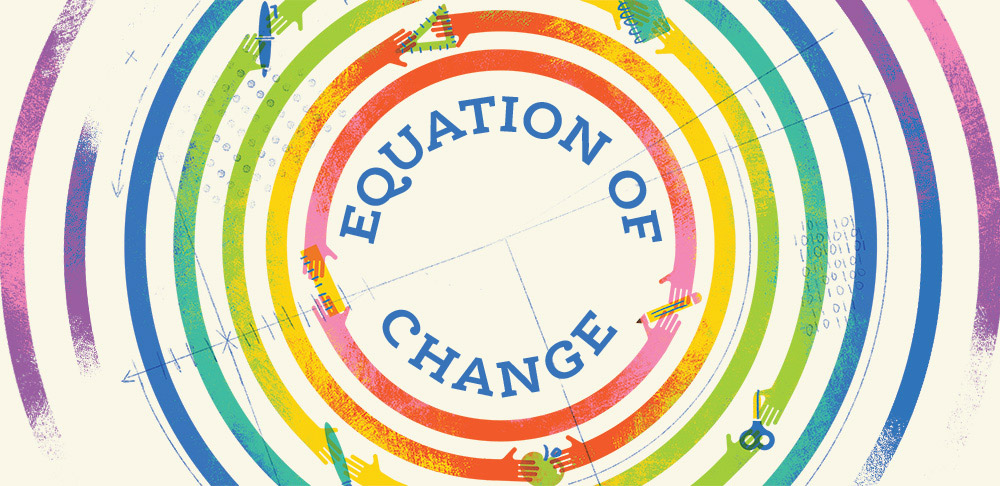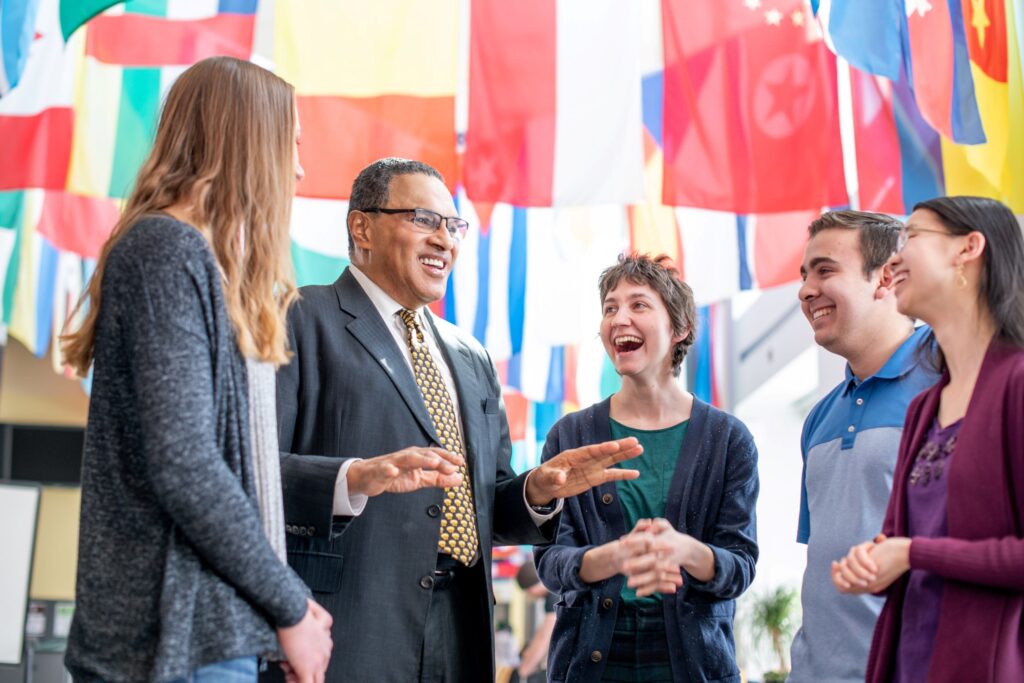Earnestine “Ernie” Baker
UMBC’s Meyerhoff Scholars Program, created in 1988, is one of the landmark contributions to student success at the university – and has become a national and international model for creating greater diversity in STEM disciplines through concentrated cohort learning. Earnestine Baker, served as director and later executive director of the program before turning over the reins to her successor, the late Lamont Tolliver, who was succeeded by Keith Harmon.
What follows are edited excerpts from a recent UMBC Magazine interview with Baker.
Read our full story about how staff built UMBC’s infrastructure for student success.
On transition from UMBC’s associate director for scholarships to The Meyerhoff Scholars Program:
I was working as the associate director of scholarships, and at the same time was working with [Freeman A. Hrabowski, III] and [former Meyerhoff director] Susan Boyer on the Meyerhoff concept. I was a part of that very first meeting in July in 1988 that Dr. Hrabowski had with the staff.
In the first conversation I had with Dr. Hrabowski, he mentioned that he was going to develop the Program, I don’t know why, but I never felt it was a risk. He wanted to develop a Program where our students would have the type of experience he and I had as undergraduates at Hampton Institute (now Hampton University). So, I knew immediately what he was looking for and how the Program should be modeled.
From the very beginning, I knew it would work. I can’t explain my feelings then, but I knew it would work and my duty was to help make it happen.
On the Meyerhoff Revolution:
I was aware, having worked with students in admissions, and with the scholarship program, that we had capable students who were not working consistently at their highest level. I did not have the opportunity to work with large numbers of students; but the students with whom I had close relationships, I could see that they needed to study more. They needed a more supportive environment.
I also thought of the students’ need to have an enriching experience that would better enable them to work in a diverse group and be successful. These experiences, I knew should be developed, monitored, and evaluated, to know if we were using the best academic approach. If we use these components, it would create the environment and culture that would inspire and encourage students to be successful.
Also I kept thinking about the need to create an environment on campus with a high level of student expectations. Sometimes students would come and say, “I got a 95 on an exam.” And we would say, “What happened to the other five?” And continue to say that over and over and over. We were talking about creating an environment where we expect the students to work at the highest level.
The faculty was extremely helpful in that they also had this expectation. It changed the climate in the classroom when the faculty encouraged students to work at their highest level.
On what’s special about UMBC:
Prior to coming to UMBC, I worked at two other universities and one college. In my early days at UMBC, (as you know I started in 1983), I experienced a high level of excitement that I had not witnessed before, even at the other big institutions. It was because people felt and understood the importance of our work as it pertained to establishing a new campus in the Maryland system.
The faculty and the staff, in particular, were innovative and they had a high energy level, and they seemed devoted and dedicated to the students. UMBC was young, but people were very proud. They would defend the best practices that we knew we had on campus. For me, coming into that environment was very exciting. I understood the energy and I just felt so much a part of developing new programs, having new ideas, and exploring them. And so for me that was what I felt across campus.
I hear this from students. I hear it from parents. I hear it from other universities. UMBC is a place that truly cares about its students. It’s not just publicity in our magazines and on our websites. That it is a reality. Students at UMBC feel that they can do anything they want in terms of preparing for their academic career and in their professional careers.
In terms of the Meyerhoff program, I can’t say enough about what UMBC and the Program has done, not just for the university but for a number of universities. We get about 40 universities a semester coming to visit the Meyerhoff program…I am still connected with UMBC contractually, and I collaborate with other universities who are interested in implementing that model. I’m giving talks internationally and nationally to groups of presidents and deans wanting to know more about the Meyerhoff model and its success. I think that it has to be said that the program is successful.
Tags: meyerhoff, Winter 2016



